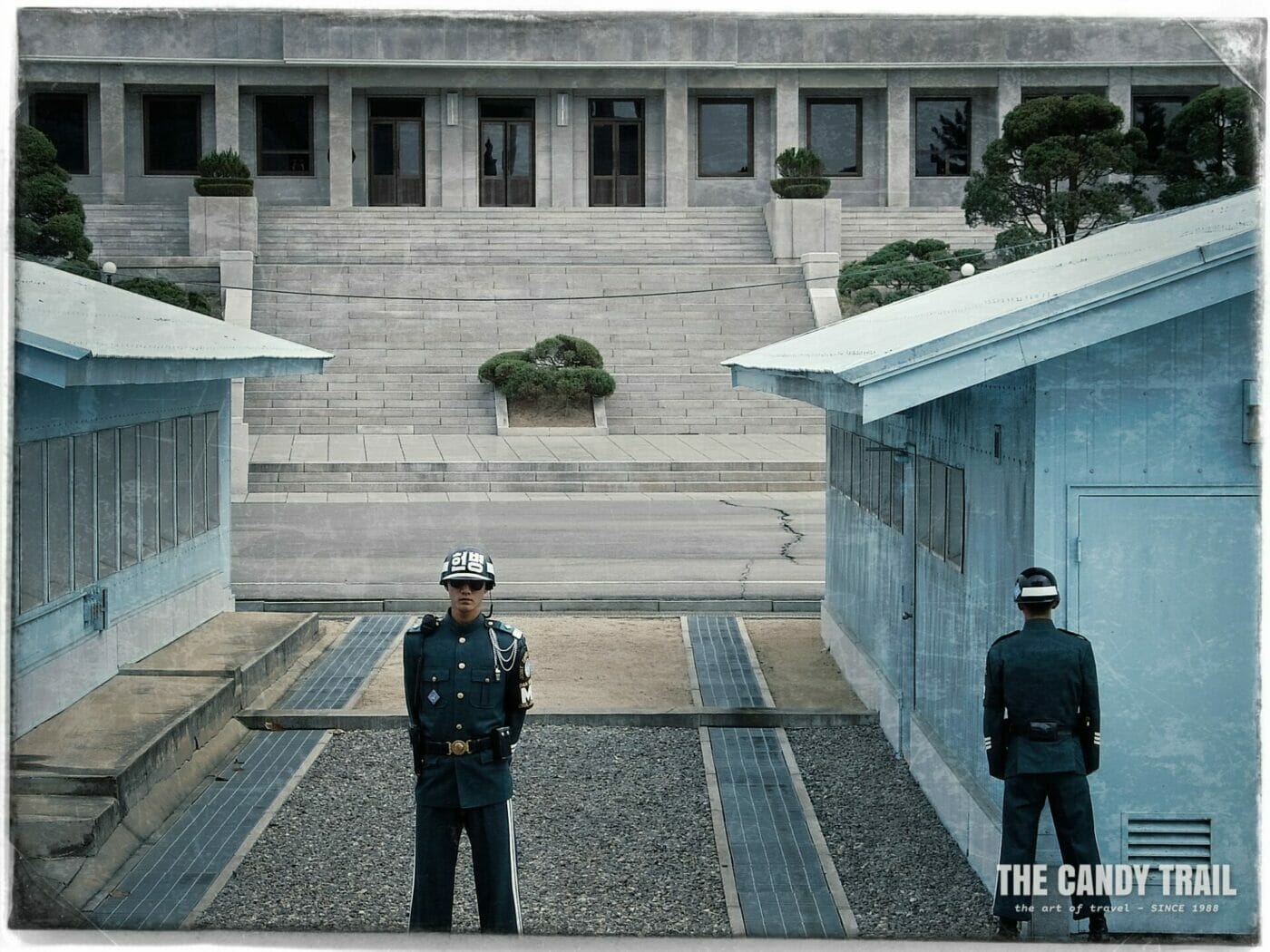Their faces are stern and unflinching, eyes hidden behind sunglasses, standing rigid in a martial arts stance.
These soldiers watch over the southern border zone.
The Demilitarized Zone is a 4 kilometer-wide no-man’s-land of woodlands, slicing the Korean peninsula in half.
Guarding this split are landmines, surveillance cameras, watchtowers and barbed wire.

And while the Demilitarized Zone must not hold any serious weaponry, enormous armies and killing machines await easily within reach. Yeah, the DMZ of Korea is perpetually the tensest border on the planet.
Best DMZ tours are the USO tour from Seoul
Actually, it’s the only option.
This is the DMZ Tour Package for Foreigners.
They take you by tour bus into the JSA, or the Joint Security Area, at Panmunjom inside the Zone.
[ SEE INFO BELOW current as of 2022 ]
Both sides administer this area, where views of the North are clear and where the tensions are only metres away.
My visit to the Demilitarized Zone occurred a week after North Korea’s first-ever nuclear test (in 2006), and so the guiding officer spoke of the ‘heightened tension’.
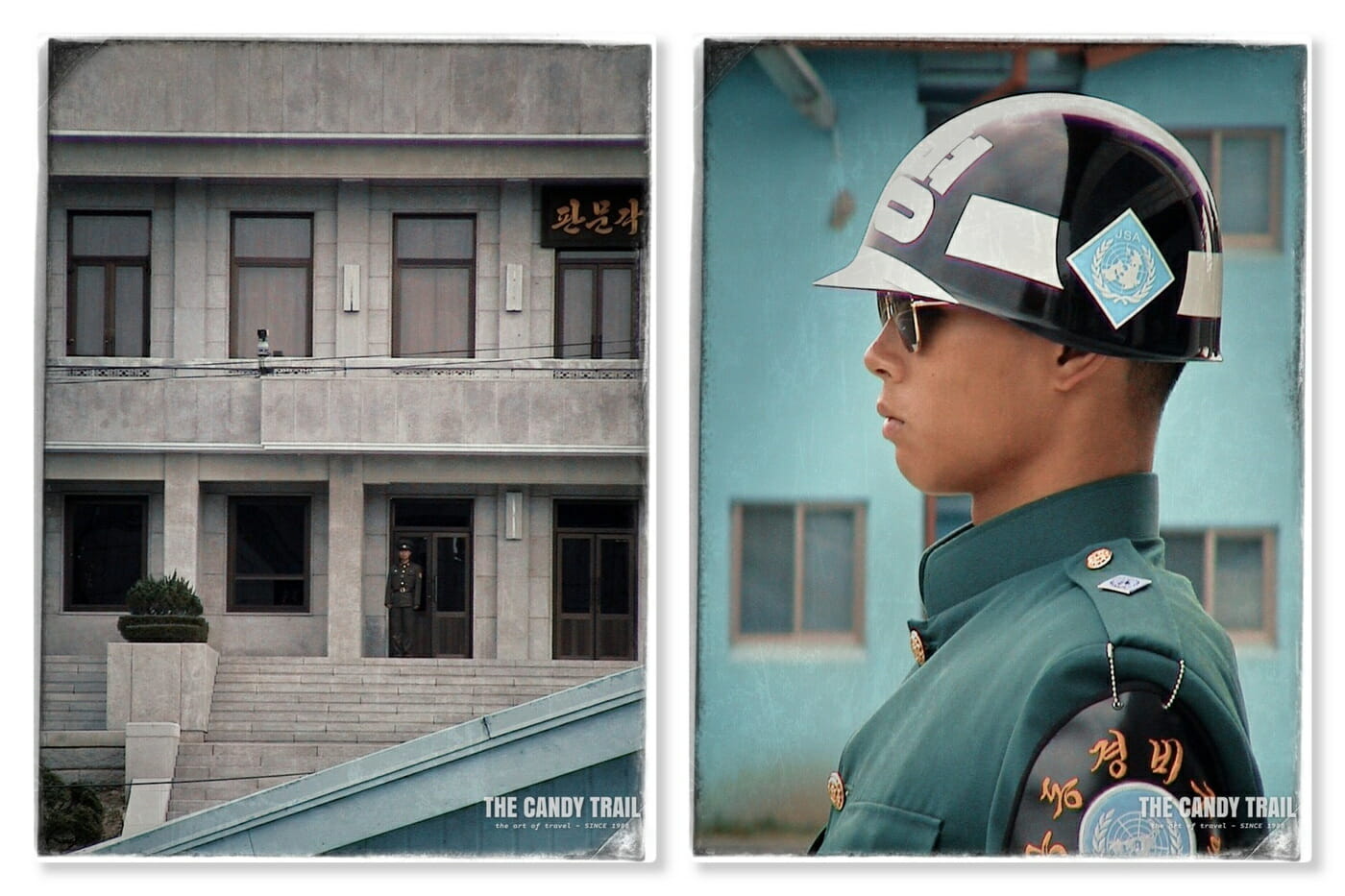
They created the Demilitarized Zone after the Korean War
A ceasefire happened in 1953, yet there’s never been a permanent peace agreement signed.
Over the years, many hostile acts have erupted, mostly started by the North.
Despite the ongoing aggravation, reunification of the peninsula is a stated goal of both Koreas.
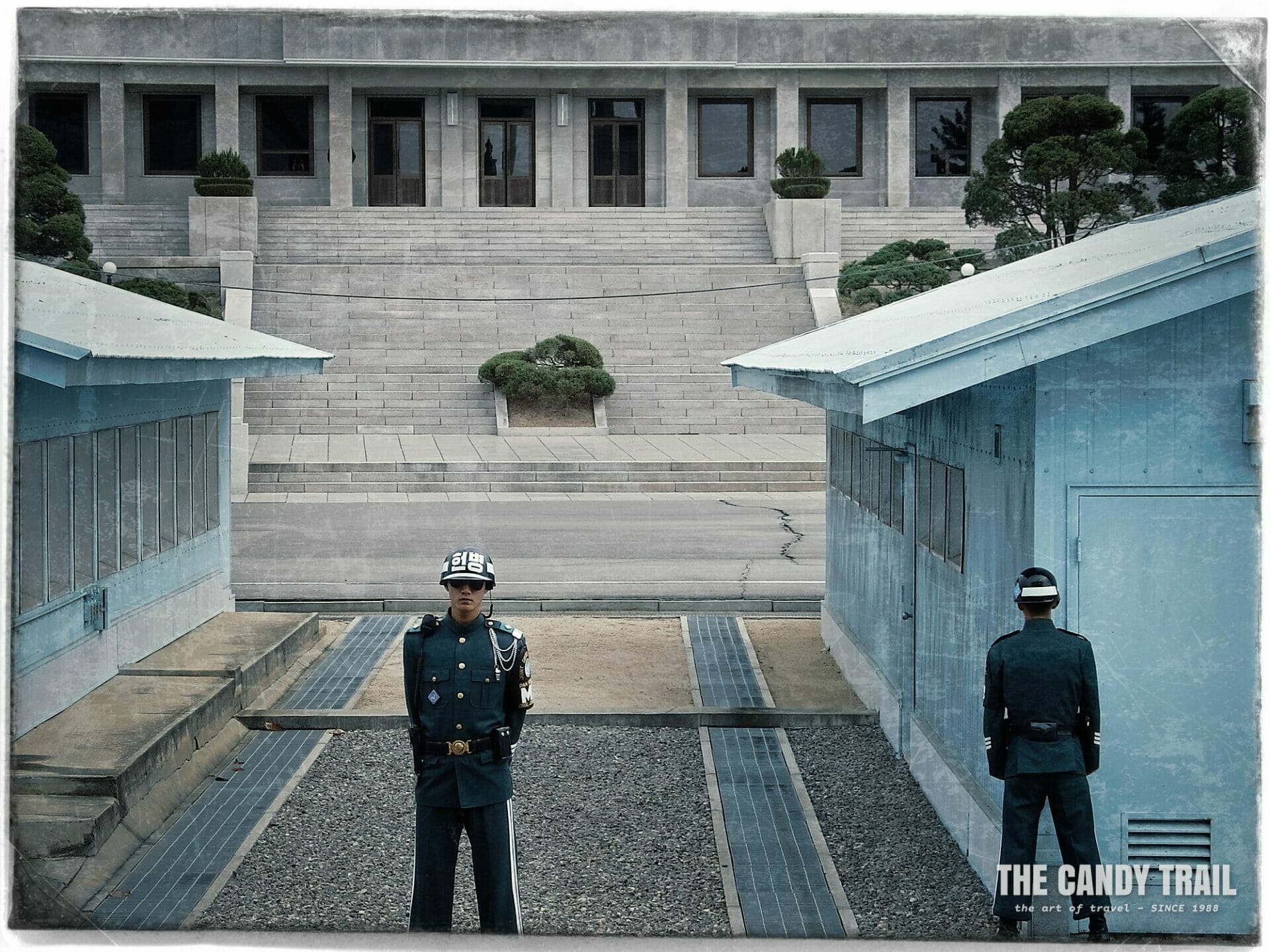
Inside the JSA Meeting Room, the US army guide told us if we sat on the official chairs, we would be “physically removed.”
Likewise, if we dashed across to the North, he or the ROK guards would stop us.
So “don’t embarrass yourselves,” were his warning words.
But like, would anyone in this group really defect to the North?
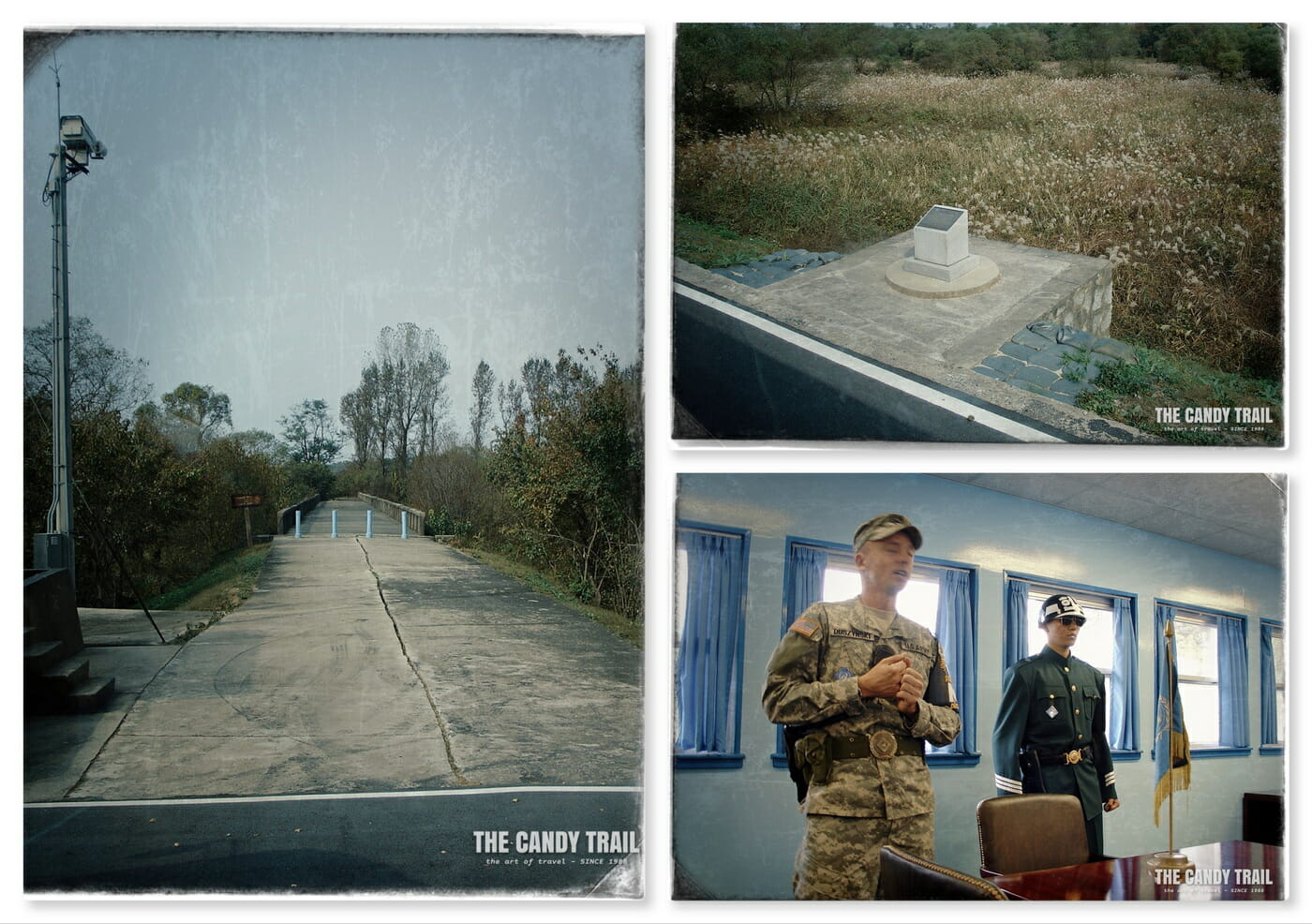
TOP RIGHT: Site of the “tree cutting incident” in 1976. Here 2 UN / US engineers were murdered with their own axes by North Korean soldiers as they tried to cut down a large tree blocking strategic views of the JSA. Three days later, the UN/US went back in force and removed the tree and here remains the stump/memorial to that incident.
BOTTOM LEFT: Inside the Military Armistice Commission meeting room, located exactly on the border, with the room inside each Korea. ‘For our safety’, there are ROK – Republic of Korea – escorts; elite troops with black belts in martial arts (and wearing sunglasses to intimidate the enemy – as they’re required to out-stare them).
Back in the 1970s – during the Cold War – North Korea had prepared tunnels thru solid rock to attack Seoul (inspired by successful Viet-Cong tactics).
These tunnels were discovered and never used.
The North had painted the walls with coal, claiming the tunnels were for mining. But science proved this false.
According to military assessments, it’s thought one tunnel could’ve surged 30,000 troops and artillery towards Seoul within an hour of hostilities.
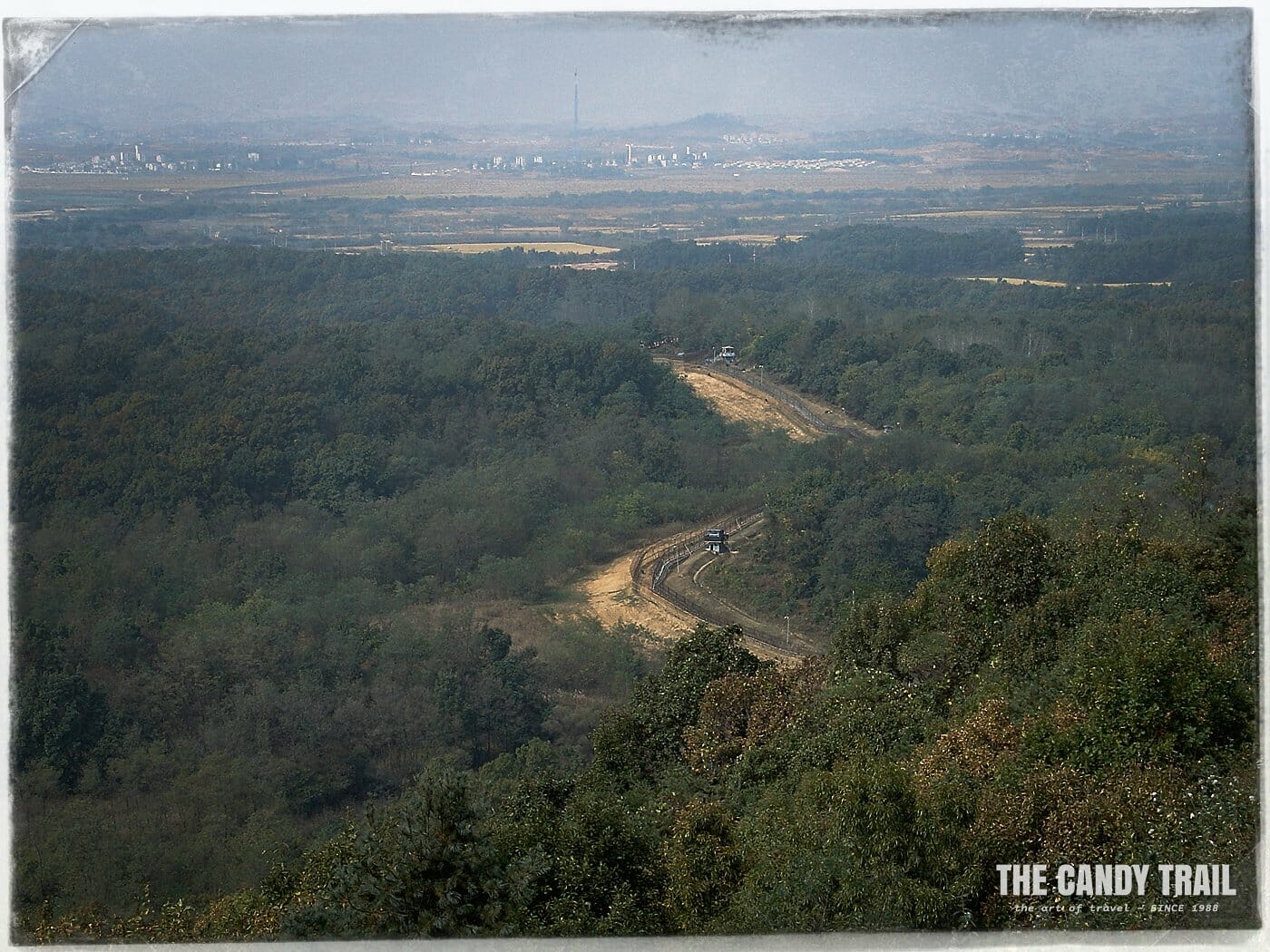
The USO DMZ Tour takes 100 people per visit, only
However, you can’t just stroll around or point your camera anywhere.
In fact, very little walking in the DMZ is allowed.
An army jeep escorted the tour buses from the JSA to other points of interest, including an observation point, where we marveled at a vista of North Korea (below).
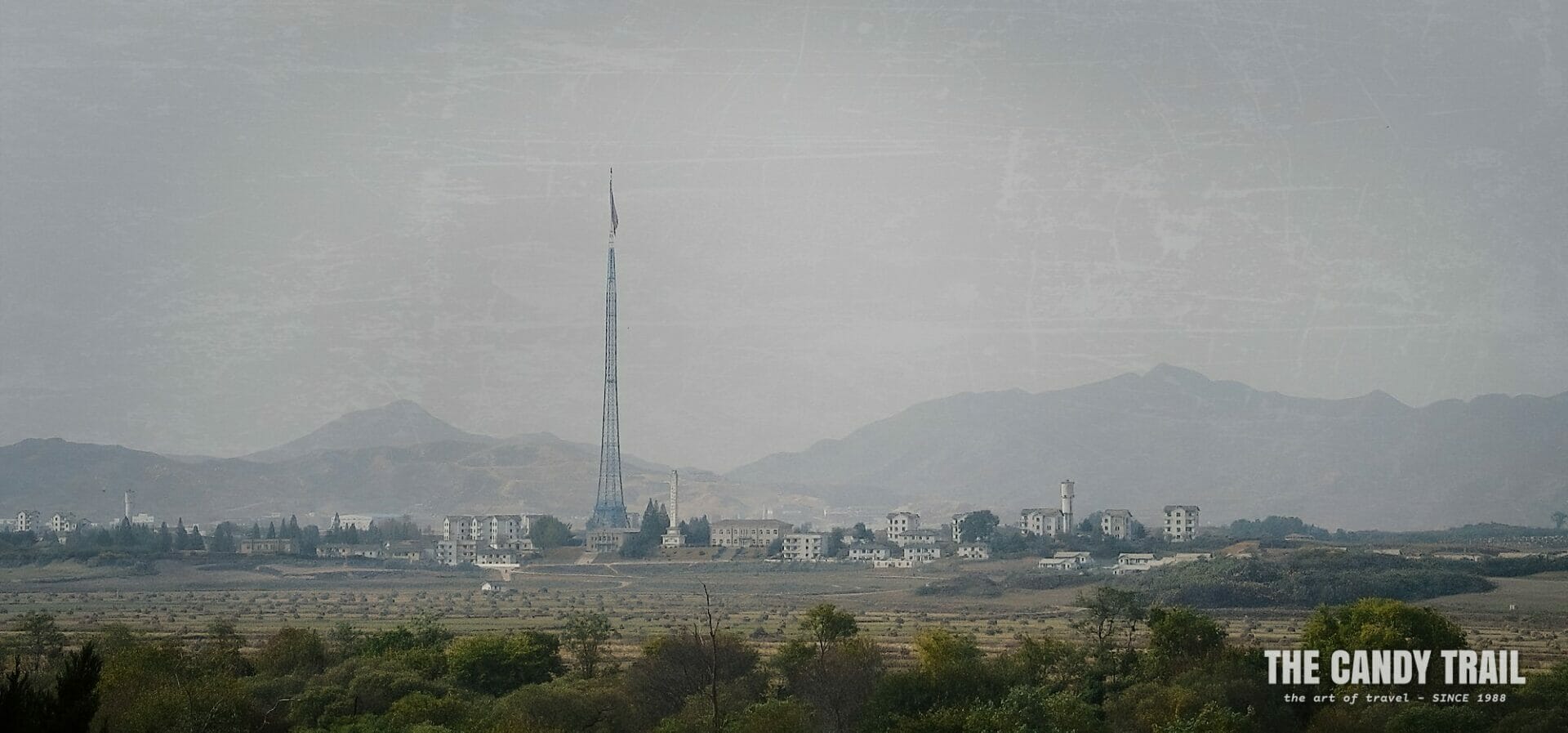
Note: the giant flag pole – 160 metres tall to out-do the South’s village flag-pole standing at 100 metres.
The North’s flag is visible when a good wind catches it.
It’s 30 meters long and one of the world’s biggest – and needs to be replaced every 3 months, because of wear and tear, according to the guide.
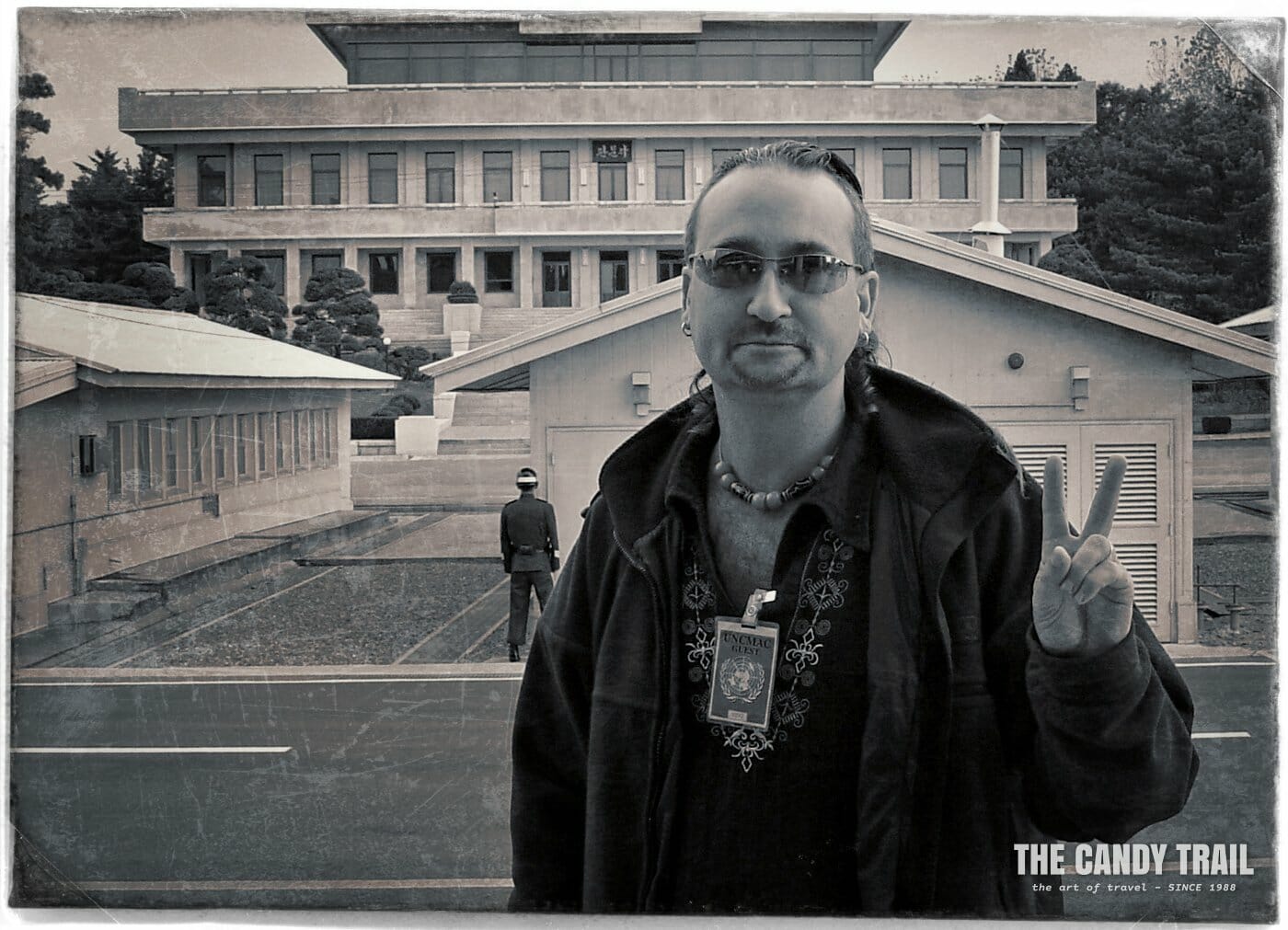
In 2017, I visited the DMZ from North Korea. On the roof terrace of that stern concrete building, I looked over to where I posed this shot in South Korea in 2006.
Taking the USO DMZ Panmunjom Tour
– CHECK FOR LATEST INFO –
First, you can NOT just rock up to the DMZ at Panmunjon.
There was only one choice using USO when I visited, but now it seems there are more choices.
You will need to make an advance tour reservation.
Try the USO reservation here. Or book here at Koridoor.
There are two USO tours available, but I suggest taking the longer, fuller-featured option. I did.
- USO Tours run on Tuesday to Saturday, inclusive, except on national holidays.
- The price of the full-day USO Korea DMZ Tour is $92
- Tour duration: 7:30 – 15:30.
- There is a lunch stop mid-tour, but this cost is NOT included.
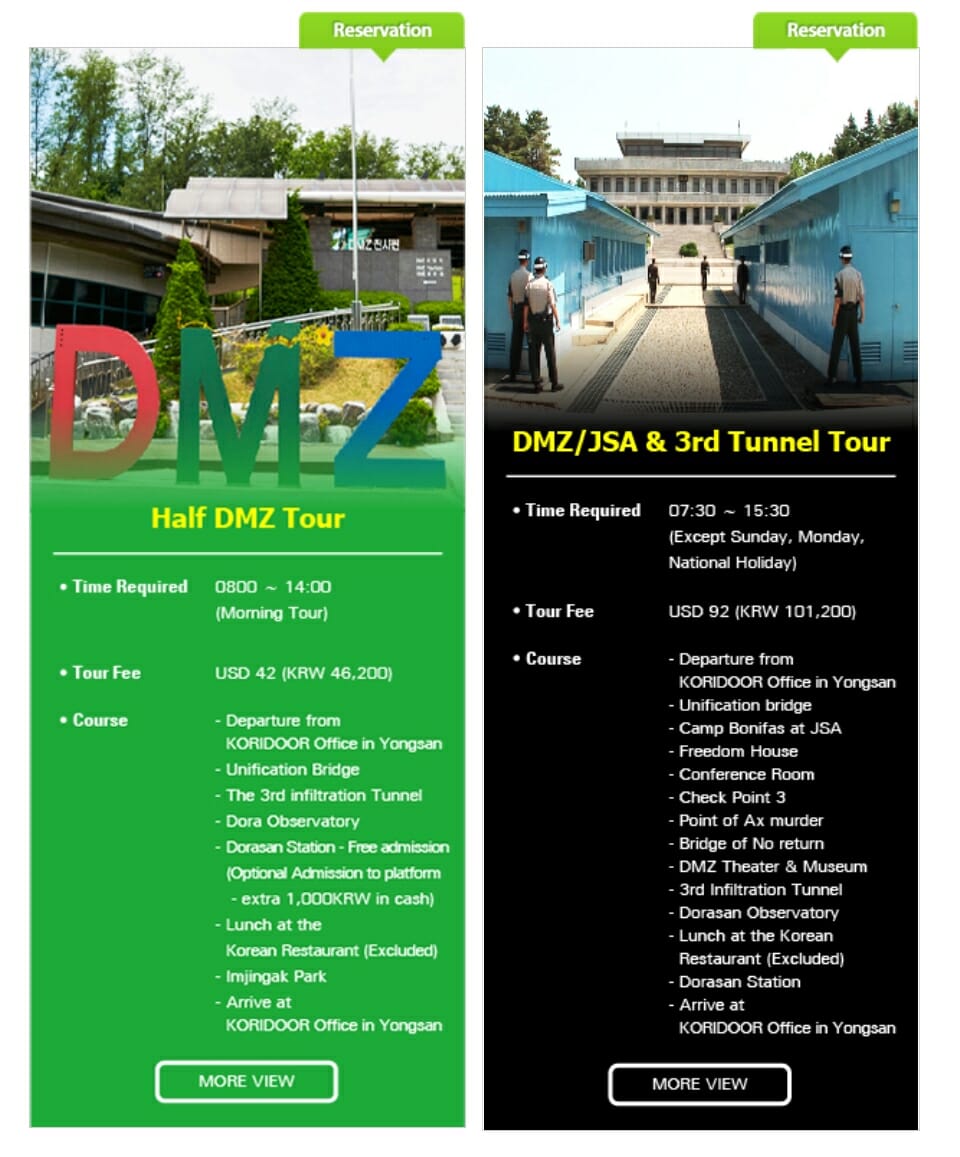
Departure Point: You will need to be at the KORIDOOR office in Yongshan before 7:30. Get there by subway.
Getting there by Subway:
- SAM GAK JI (삼각지) Station – line #4 and #6
: Way out to Exit No. 10 and walk straight about 500 Meters (8 mins) to “SeoJo Building” KORIDOOR Tour office on the 1st floor. - NAM YOUNG (남영) Station – line # 1
: Way out to Exit No. 1 to the right and walk about 100 Meters (3 mins) to intersection, then turn right and walk about 120 Meters to “SeoJo Building” KORIDOOR Tour office on the 1st floor.
(Info from Koridoor.co.kr – and check this link for taxi directions AND a walking map of the area):
DMZ Korea Tour – Travel Tips
YOU MUST TAKE YOUR PASSPORT.
You must not to speak, gesture, approach, or respond to the North Korea guards.
Wear boots/shoes if doing the tunnel visit.
It’s all very controlled – so listen to the escort soldiers and don’t wander far – or else. The time for each stop is often short/rushed.
THINGS CHANGE:
There may now also be restrictions on visiting the cut tree / axe murder site and the Bridge of No Return because of disagreements with the north. When I visited these sights, they were only accessible from the bus window, anyhow.
The JSA tour has changed from an open spot (always-on tourist destination to a border military zone). Therefore, unlike the pre-booking system, confirmation is daily, and it’s done one day prior to the tour date.
Travels in South Korea – 2006


